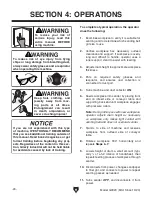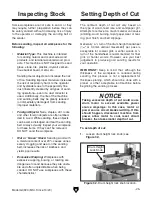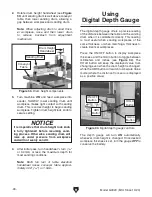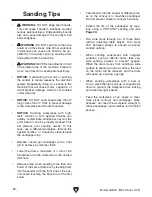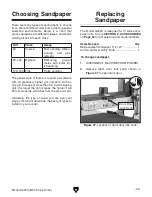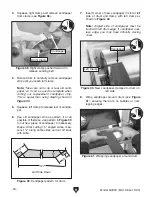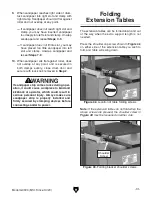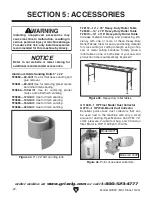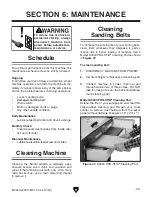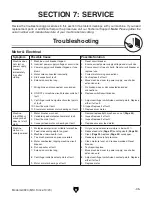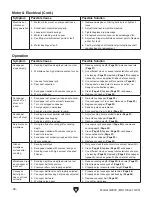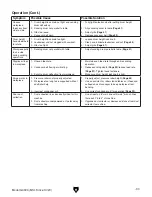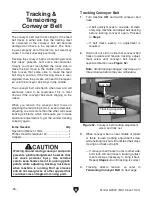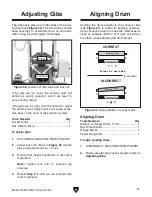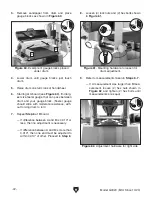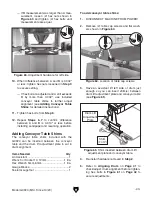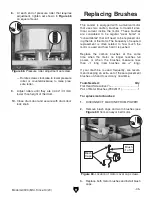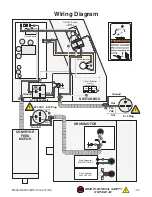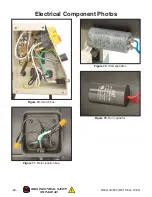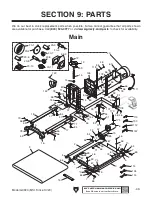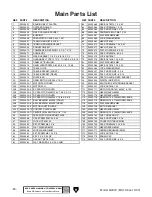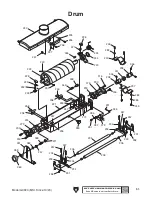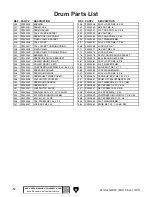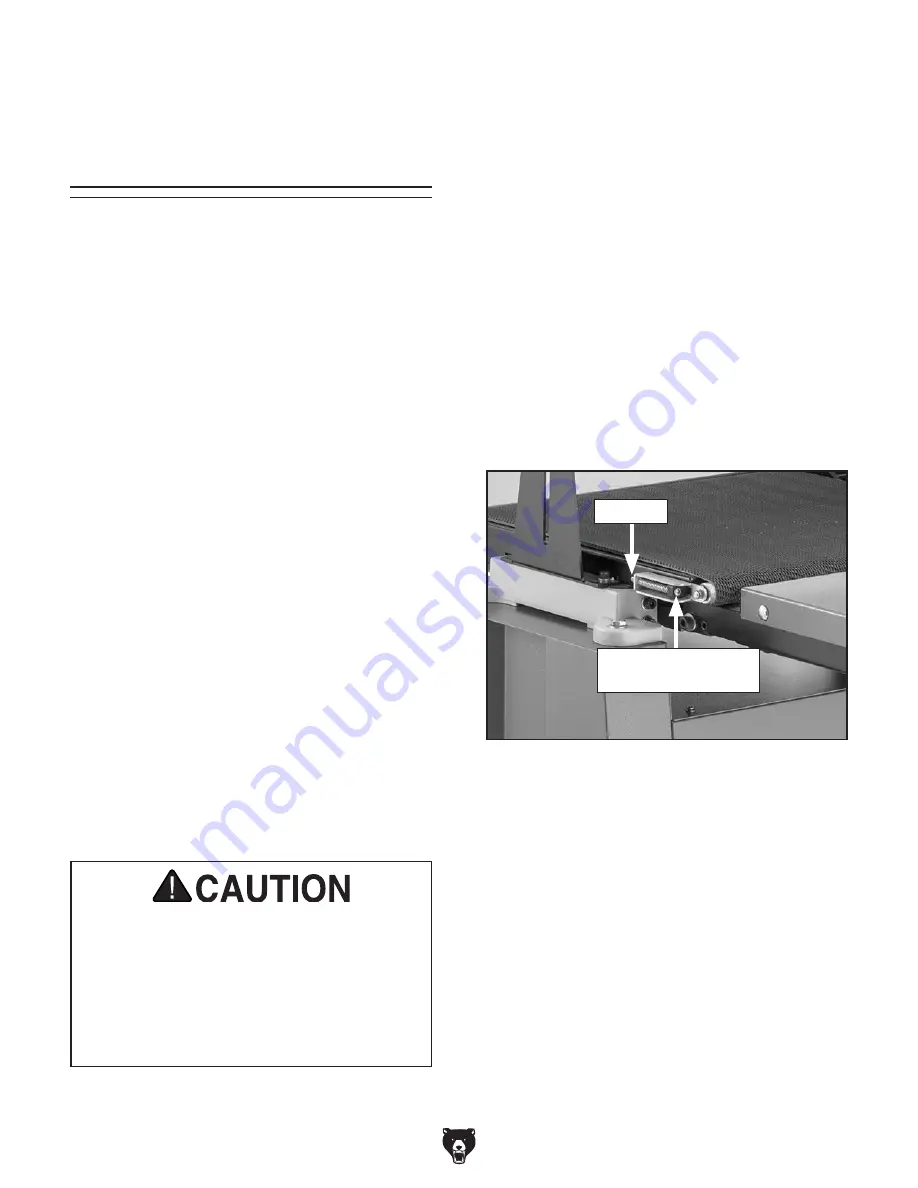
-38-
Model G0920 (Mfd. Since 10/20)
2. Hold lock nut still on side that conveyor belt
tracks towards and tension tracking adjust-
ment screw until conveyor belt tracks in
opposite direction (see
Figure 52).
Note: Small tracking changes may take up to
three minutes before they are noticeable.
3. When conveyor belt is near middle of rollers
or table, loosen tracking adjustment screw
while holding lock nut still until feed belt stops
moving and tracks straight.
Figure 52. Conveyor belt tracking adjustment
screw and lock nut.
Lock Nut
Tracking Adjustment
Screw
— If belt tracks evenly, no adjustment is
required.
Working around moving conveyor and parts
presents pinch/entanglement hazards that
can cause personal injury. Use extreme
care to keep hands clear of in-running pinch
points while adjusting tracking nut/screw
when machine is running. Roll up sleeves
and do not wear gloves or other apparel that
could become entangled in moving parts.
1. Turn machine ON and watch conveyor belt
track.
— If belt quickly moves to one side, immedi-
ately stop machine and adjust belt tracking
before running conveyor again. Proceed
to
Step 2.
Tracking Conveyor Belt
— If conveyor belt tracks too far to other side,
hold lock still and loosen tracking adjust-
ment screw as necessary to bring it back.
Repeat
Steps 2–3 until tracking is correct.
4. Tracking affects tension, so refer to
Tensioning Conveyor Belt on next page.
Tracking &
Tensioning
Conveyor Belt
The conveyor belt must track straight. If the feed
belt tracks to either side, then the tracking must
be corrected or the conveyor belt will become
damaged and have to be replaced. The track-
ing was properly set at the factory, but wear may
cause it to track unevenly eventually.
Tracking the conveyor belt is a balancing process
that takes patience and some trial-and-error.
Usually you must over-tighten the loose side to
make the belt move to the middle of the rollers,
then loosen that same side to make the feed
belt stay in position. If the tracking screw is over-
adjusted, then the process will need to be repeat-
ed until the conveyor belt stays in the middle.
The conveyor belt will stretch when new and will
eventually need to be tensioned. This is most
obvious if the conveyor belt starts slipping on the
rollers.
When you tension the conveyor belt, focus on
adjusting the tensioning bolts in even increments.
Adjusting one side more than the other will cause
tracking problems, which will require you to make
additional adjustments to get the sander tracking
correctly again.
Items Needed
Qty
Open-End Wrench 10mm .................................. 1
Phillips Head Screwdriver #2 ............................ 1
Calipers ............................................................. 1
Summary of Contents for G0920
Page 60: ......

